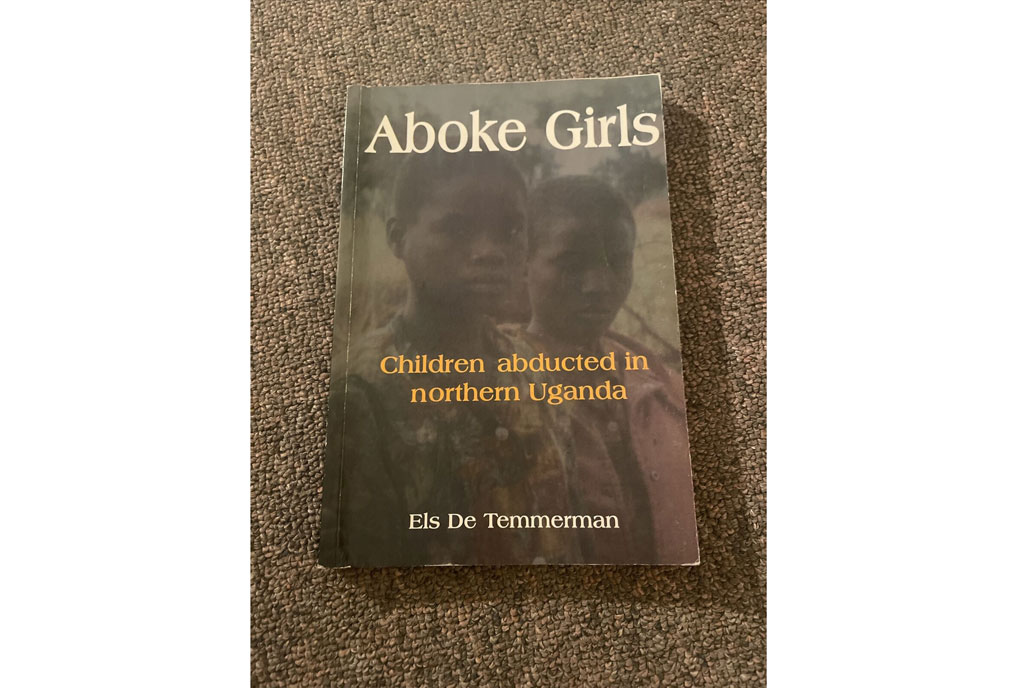Prime
How Kony, acolytes turned children into cannon fodder

Book cover.
What you need to know:
- Book title: Aboke Girls: Children Abducted in Northern Uganda
- Author: Els de Temmerman
- Pages: 149
- Price: Shs15,000
- Where: Fountain Publishers Library and Bookshop.
“Which is better – to have rules and agree, or to hunt and kill?”
That question appears on page 164, Chapter 11 of the 1954 William Golding literary classic, Lord of the Flies.
The book is set during an unspecified war period when a plane carrying schoolboys ends up crashing on a deserted island, leaving them stranded and to their own devices.
Through the actions of these children, we glimpse the sheer evil of humankind.
It is the thin line between innocence and evil reflected in the art of this book that is seemingly imitated by murderous life in the book, “Aboke Girls: Children Abducted in Northern Uganda,” by Els de Temmerman.
As powerful a tearjerker as Lord of the Flies, Temmerman’s book however finds its emotive power in fact; not fable.
The story starts in October 1996 when one hundred and thirty nine girls were abducted from St Mary’s College, Aboke, in northern Uganda. The deputy Italian headmistress of the school, Sister Rachele, pursues the abductors into the bush and thereby the belly of the beast of the Lord’s Resistance Army (LRA), led by Joseph Kony.
After she comes up against LRA commander Mariano Ocaya-Lagira, a devil incarnate who gets off on killing children, she manages to secure the release of one hundred and nine girls.
What happens to the remaining thirty girls and thousands of other children who have disappeared from their homes and schools due to the LRA’s terroristic tactics is partly recounted through the eyes of two Aboke girls, Ellen and Sarah, who managed to escape. One of the abductors, a teenage boy called Norman, who was part of Kony’s elite troops is also referenced.
To rescue the thirty girls still in LRA captivity, Sister Rachele meets the top leaders in the Great Lakes Region and beyond. She also witnesses the cold realities of war and politics when she meets President Museveni who, in reprising a tactic he used against the Tito Okello and Bazilio Okello military junta during the 1985 Nairobi peace talks, reveals his plan to defeat the LRA.
“I think I can leave both ways open: the military road and the road to peace. And we will see which one works,” says Museveni.
She also learns that the war in the north involved several actors whose historical imperatives had to be considered.
The south of Sudan, as represented by the faction-ridden animist/Christian Sudan People’s Liberation Army/Movement (SPLA/M), was all pistols-at-dawn against the north, led by Islamist president Omar Bashir’s regime. Bashir’s regime was providing succour and support to the LRA while Museveni’s government backed the SPLA.
Instead of the grass suffering, it was the roots which suffered as this became a children’s war with thousands of children being abducted in northern Uganda and forced into the LRA’s ranks. These children were turned into killing machines.
We have seen this before with former Liberian head of state Charles Taylor who used child soldiers in the Liberian civil war, which was fought from 1989 to 1996. This war claimed the lives of more than 200,000 Liberians and further displaced a million others into refugee camps in neighbouring countries.
Taylor was also the guiding spirit behind the creation of the Small Boys Unit (SBU), a group of children who were forcibly recruited by the Revolutionary United Front (RUF) as militants during the Sierra Leone Civil War.
In 1998, 25 percent of the soldiers fighting in the war were under 18, and of those, 50 percent were abducted and 28 percent were under the age of 12.
German dictator Adolf Hitler used similar tactics when he created the Hitler Youth (Hitlerjugend, or HJ), the Nazi-organised youth movement.
In 1933, the Hitler Youth movement had approximately 100,000 members. By the end of the same year, membership had increased to more than two million (30 percent of German youth ages 10-18).
Temmerman’s book, hence, fits a distinct world-historical context that can only be described as Satanic.
However, the tales recounted in Temmerman’s book make Hitler’s atrocities seem almost sedate in comparison. The grisly tales of the crimes these Ugandan children are made to commit are as vivid, largely thanks to Temmerman’s excellent prose, as they are tear-jerking.
To add to this near-Biblical text, in terms of the Luciferan crimes committed herein, each chapter is prefaced by a quote from the Bible. Thus a messianic tone is set and the reader is immediately made aware that we are dealing with crimes which go beyond the criminal to become the very definition of sinful.
To be sure, children are the foundation and future of any society. Indeed, Isaiah 11:6 states: “The wolf shall dwell with the lamb, and the leopard shall lie down with the young goat, and the calf and the lion and the fattened calf together; and a little child shall lead them.”
But the LRA violated Ugandan society’s existence by turning our children into cannon fodder and this alone makes this book one of the most poignant literary works about Uganda one shall ever encounter.




